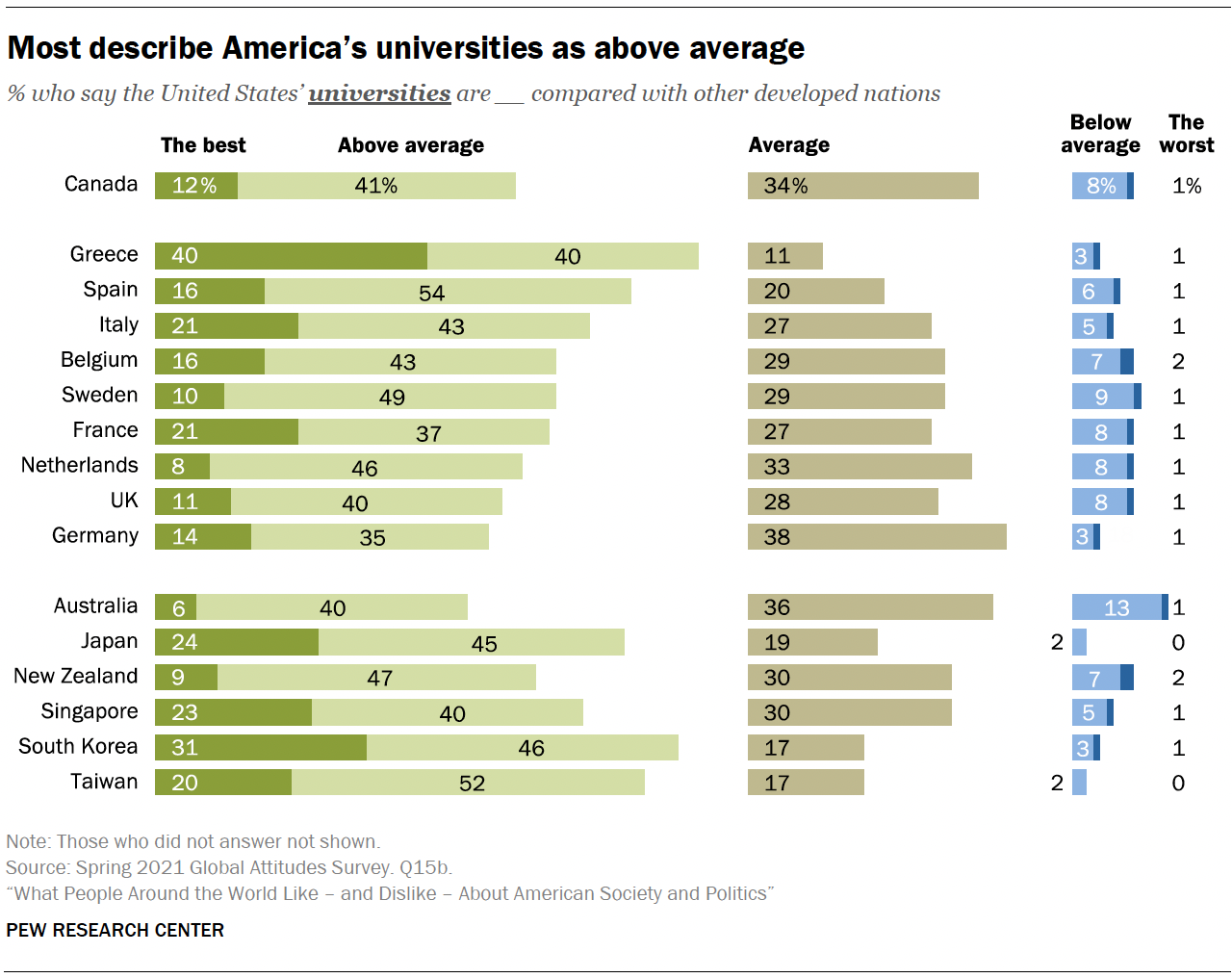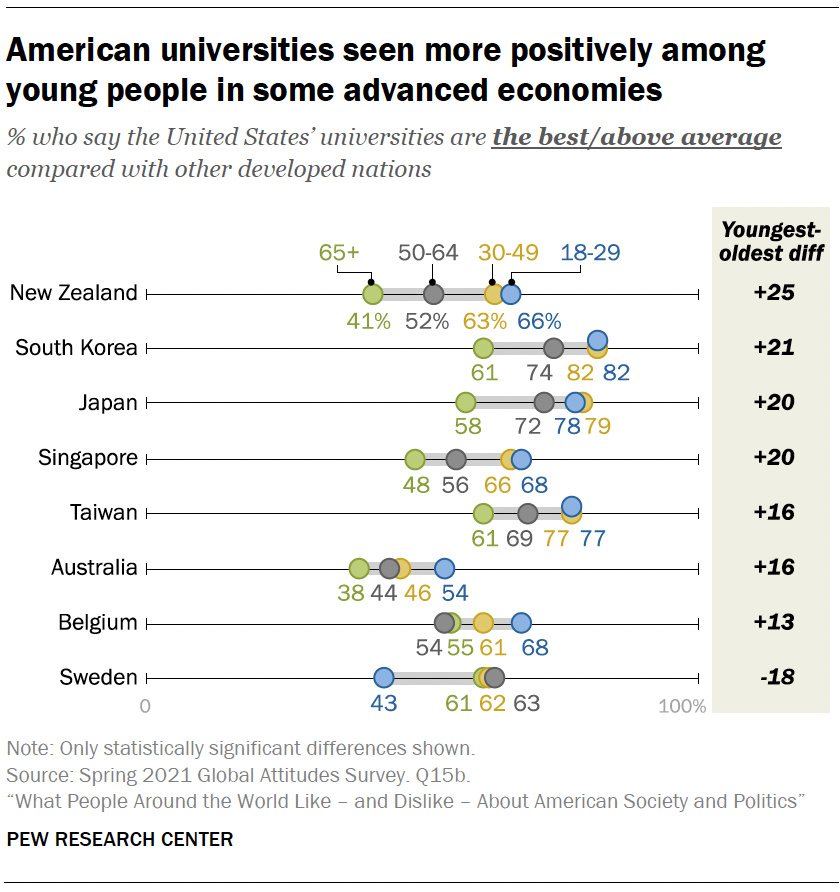In 1972, when the U.S. government passed the landmark Title IX laws to promote gender equality in education, there was a 12 percentage-point gap in the proportion of bachelor’s degrees going to men compared to women. By 1982, the gap had closed. Nobody predicted what happened next: the gap started to widen rapidly in the opposite direction. By 2019, the gender gap in bachelor awards was wider, at 14 points, than it had been in 1972 — but the other way round. (We are not claiming here that Title IX had much impact, however).
To Hanna Rosin, author of The End of Men, it is “the strangest and most profound change of the century, even more so because it is unfolding in a similar way pretty much all over the world.”
Importantly, there is a gender gap not only in rates of college enrollment, as we described earlier in the year, and recently highlighted in the Wall Street Journal and The Atlantic, but also in rates of completion among those who do enroll.
College enrollment is falling, mostly among men
the gender gap widened significantly in 2020.
College enrollment has steadily declined following the Great Recession, with total enrollment among both men and women decreasing each year from 2012 to 2020. But many more women than men were enrolling in college when rates began to fall in 2012 (11.6 million women were enrolled at the time, compared to 8.6 million men). If the relative decline among men and women had been similar, we would expect the gender gap in enrollment rates to remain constant. Instead, the fall 2020 decline in male enrollment eclipsed the decline in female enrollment for the fifth year in a row and the gender gap in enrollment is widening. COVID-19 accelerated this trend.
Women graduate high school and college at higher rates
Education gaps across the lifecycle
Men born from 1955 to 1974 (ages 45-64 in 2019) who likely wrapped up their postsecondary education decades ago, attained bachelor’s and graduate degrees at a similar rate to women in their age group. By contrast, older men born before 1955 had higher educational attainment than women, and younger men born after 1974 seem to be consistently outpaced by women their age.
Class, gender and the education gap
84% of students from the top income quintile enroll in any college in the fall after high school graduation compared to 72% of students in the middle class and 63% of students in the bottom income quintile.

